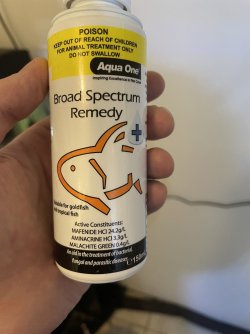There have been more meds and methods for dealing with Ich than most hobbyist would even guess. This is partly due to the need to treat fish sold for food. These are severely limited in what might be used.
One of the most effective medications, but which will bother some species of fish, is a mix of malachite green and formaldehyde. Also, Flubendazole is effective. I cannot say if you can get either of these in Aus. But, I assume that since Colin lives there, he would not suggest the malachite green if it is not available there.
If either of you (or anybody reading this) is really curious about Ich treatments, you will have a ball with some of the tables in this paper.
Picon-Camacho, S.M., Marcos-Lopez, M., Bron, J.E. and Shinn, A.P., 2012. An assessment of the use of drug and non-drug interventions in the treatment of Ichthyophthirius multifiliis Fouquet, 1876, a protozoan parasite of freshwater fish.
Parasitology,
139(2), pp.149-190.
Summary
Infection by the ciliate protozoan Ichthyophthirius multifiliis Fouquet, 1876 causes significant economic losses in freshwater aquaculture worldwide. Following the ban on the use of malachite green for treating food fish, there has been extensive research aimed at identifying suitable replacements. In this paper we critically assess drug and non-drug interventions, which have been tested for use or have been employed against this parasite and evaluate possibilities for their application in farm systems. Current treatments include the administration of formaldehyde, sodium chloride (salt), copper sulphate and potassium permanganate. However, purportedly more environmentally friendly drugs such as humic acid, potassium ferrate (VI), bronopol and the peracetic acid-based products have recently been tested and represent promising alternatives. Further investigation, is required to optimize the treatments and to establish precise protocols in order to minimize the quantity of drug employed whilst ensuring the most efficacious performance. At the same time, there needs to be a greater emphasis placed on the non-drug aspects of management strategies, including the use of non-chemical interventions focusing on the removal of free-swimming stages and tomocysts of I. multifiliis from farm culture systems. Use of such strategies provides the hope of more environmentally friendly alternatives for the control of I. multifiliis infections.
full paper here
http /dspace.stir.ac.uk/bitstream/1893/10147/1/Picon Camacho et al Parasitology Ich chemo review.pdf
/dspace.stir.ac.uk/bitstream/1893/10147/1/Picon Camacho et al Parasitology Ich chemo review.pdf


 /dspace.stir.ac.uk/bitstream/1893/10147/1/Picon Camacho et al Parasitology Ich chemo review.pdf
/dspace.stir.ac.uk/bitstream/1893/10147/1/Picon Camacho et al Parasitology Ich chemo review.pdf